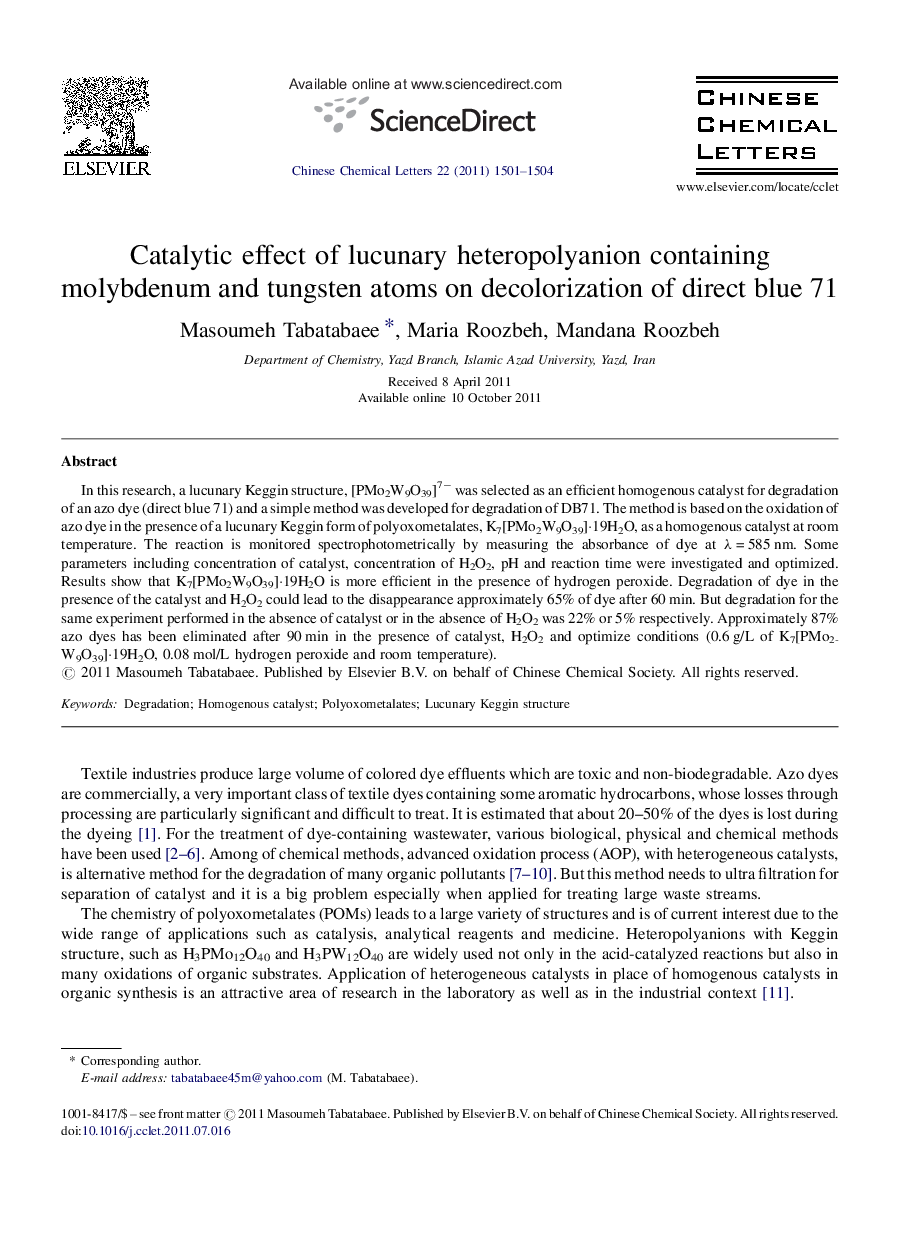| کد مقاله | کد نشریه | سال انتشار | مقاله انگلیسی | نسخه تمام متن |
|---|---|---|---|---|
| 1257615 | 971571 | 2011 | 4 صفحه PDF | دانلود رایگان |

In this research, a lucunary Keggin structure, [PMo2W9O39]7− was selected as an efficient homogenous catalyst for degradation of an azo dye (direct blue 71) and a simple method was developed for degradation of DB71. The method is based on the oxidation of azo dye in the presence of a lucunary Keggin form of polyoxometalates, K7[PMo2W9O39]·19H2O, as a homogenous catalyst at room temperature. The reaction is monitored spectrophotometrically by measuring the absorbance of dye at λ = 585 nm. Some parameters including concentration of catalyst, concentration of H2O2, pH and reaction time were investigated and optimized. Results show that K7[PMo2W9O39]·19H2O is more efficient in the presence of hydrogen peroxide. Degradation of dye in the presence of the catalyst and H2O2 could lead to the disappearance approximately 65% of dye after 60 min. But degradation for the same experiment performed in the absence of catalyst or in the absence of H2O2 was 22% or 5% respectively. Approximately 87% azo dyes has been eliminated after 90 min in the presence of catalyst, H2O2 and optimize conditions (0.6 g/L of K7[PMo2W9O39]·19H2O, 0.08 mol/L hydrogen peroxide and room temperature).
Journal: Chinese Chemical Letters - Volume 22, Issue 12, December 2011, Pages 1501–1504